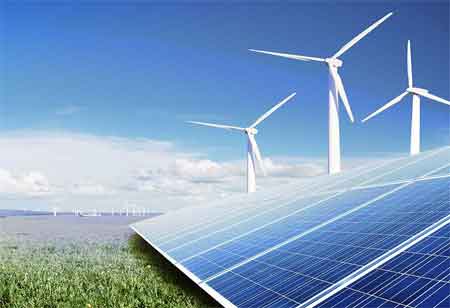Thank you for Subscribing to Agri Business Review Weekly Brief
How New Agriculture Technology Is Transforming Modern Farming

By
Agri Business Review | Monday, April 04, 2022
Stay ahead of the industry with exclusive feature stories on the top companies, expert insights and the latest news delivered straight to your inbox. Subscribe today.
Despite being arguably the most important, the traditional livestock industry is widely overlooked and underserved. Yet, livestock provides much-needed renewable natural resources to people daily.
Fremont CA: In modern-day agriculture, innovation is greater vital than ever. The industry is facing tremendous demanding situations, together with growing supply fees, a labor shortage, and adjustments in consumer alternatives for sustainability and transparency. Agriculture corporations are increasingly more aware that solutions to those issues are required. The agricultural generation has seen a large growth in funding over the last ten years, with $6.7 billion invested within the previous five years and $1.nine billion invested in the previous yr by myself. Indoor vertical farming, automation and robotics, the cattle era, current greenhouse practices, precision agriculture, artificial intelligence, and blockchain have all seen giant technological improvements.
Livestock Farming Technology
notwithstanding being arguably the most critical, the traditional livestock enterprise is extensively left out and underserved. Livestock affords tons-needed renewable herbal resources to people every day. Historically, cattle management has been defined as the operation of dairy farms, hen farms, livestock ranches, or other livestock-associated agribusinesses. Farm animals managers have to hold correct monetary data, supervise personnel, and make certain proper animal care and feeding. Current trends, however, have confirmed that generation is revolutionizing the world of cattle control. Within the closing 8-10 years, new trends have made giant upgrades to the enterprise, making monitoring and dealing with farm animals an awful lot less difficult and statistics-pushed. in addition, dietary technologies, virtual technology, genetics, and other varieties of an era can be used.
Check Out This : Bioenergy Solutions Companies
Indoor Vertical Farming
Indoor vertical farming can increase crop yields, triumph over the confined land area, and even reduce the environmental effect of farming by means of lowering the distance traveled inside the supply chain. Indoor vertical farming is the practice of growing produce stacked one on top of the alternative in closed, controlled surroundings. As compared to traditional farming strategies, they were making use of installed developing cabinets reduces the quantity of land area required to grow vegetation. Because of its ability to thrive in small regions, this form of increase is often related to the metropolis and concrete farming. Vertical farms are awesome in that a few configurations do not require soil for plant growth. Maximum is hydroponic, in which greens are grown in a nutrient-dense bowl of water, or aeroponic, in which plant roots are frequently sprayed with water and nutrients. Artificial development lights are utilized in the vicinity of herbal sunlight.
The advantages of indoor vertical farming are obvious, from sustainable urban growth to maximizing crop yield with decreased hard work expenses. Vertical farming can exactly degree variables inclusive of humidity, mild, and water 12 months-round, increasing meals production with regular harvests. In addition, vertical farms expend 70 percent less water than conventional farms due to their decreased water and energy intake. Labor is also greatly decreased by way of the use of robots to handle harvesting, planting, and logistics, thereby addressing the cutting-edge labor scarcity in the agriculture enterprise.





